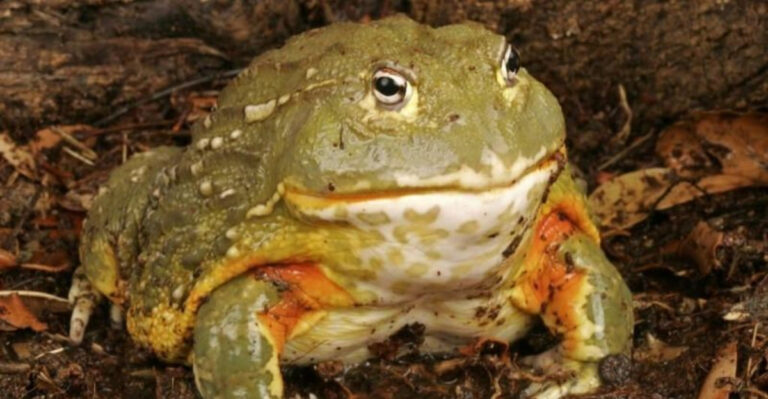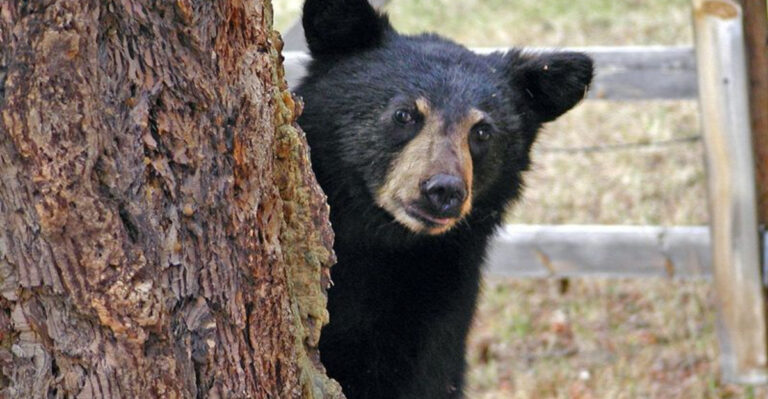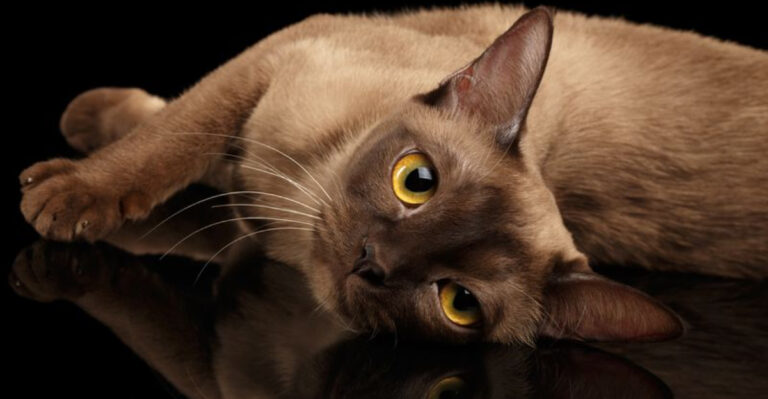15 Lethal Animals Lurking In The American Southwest
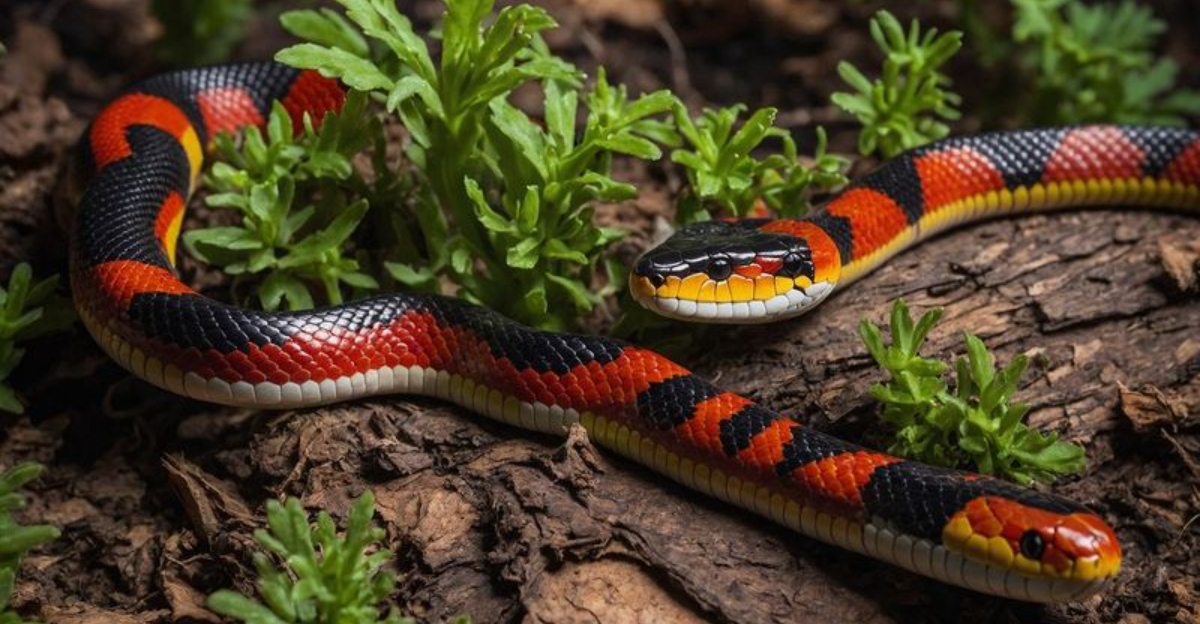
The American Southwest hides more than just breathtaking landscapes and stunning sunsets. This vast region harbors some of North America’s most dangerous creatures.
From venomous reptiles to stealthy predators, these animals have evolved perfect survival strategies for the harsh desert environment.
Whether you’re hiking through Arizona’s canyons or camping in New Mexico’s wilderness, knowing which lethal animals call this region home could save your life.
1. Western Diamondback Rattlesnake
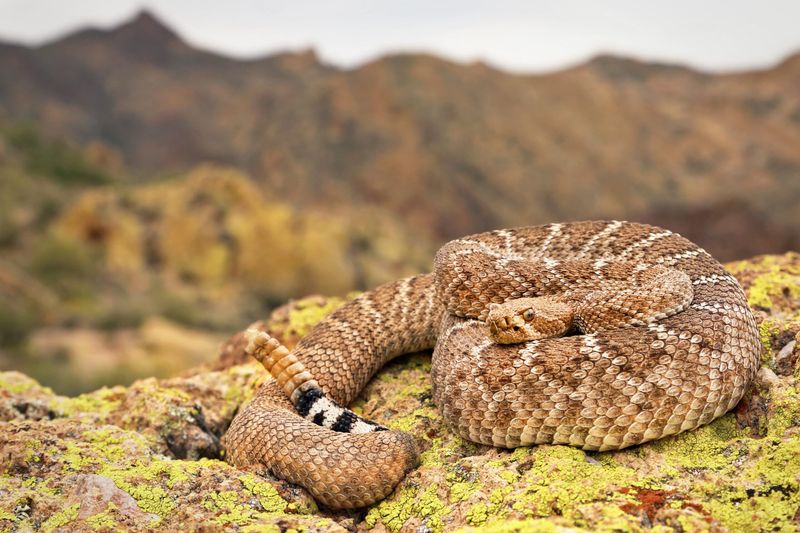
Responsible for more snakebite fatalities than any other species in the United States, the Western Diamondback strikes fear into desert hikers. These hefty serpents can grow up to 7 feet long and deliver enough venom in one bite to kill several adults.
Their distinctive diamond pattern and signature rattle serve as nature’s warning system. When threatened, they coil into a defensive S-shape, rattling vigorously before striking with lightning speed.
Found throughout the Southwest, these ambush predators hide under rocks and brush during scorching days, becoming active hunters in cooler evenings. Their heat-sensing pits detect warm-blooded prey with remarkable precision.
2. Gila Monster

Unlike quick-striking snakes, the Gila Monster delivers its venom through a slow, grinding bite that becomes increasingly painful as minutes pass. These orange-black beaded lizards are the only venomous lizards native to the United States.
Moving with surprising stealth despite their chunky bodies, Gila Monsters spend nearly 95% of their lives underground. When they emerge, usually after desert rains, encountering one can spell serious trouble.
Their neurotoxic venom causes extreme pain, swelling, weakness, and in rare cases, respiratory failure. Ancient indigenous peoples considered a Gila Monster bite so powerful that nothing could save the victim.
3. Arizona Bark Scorpion
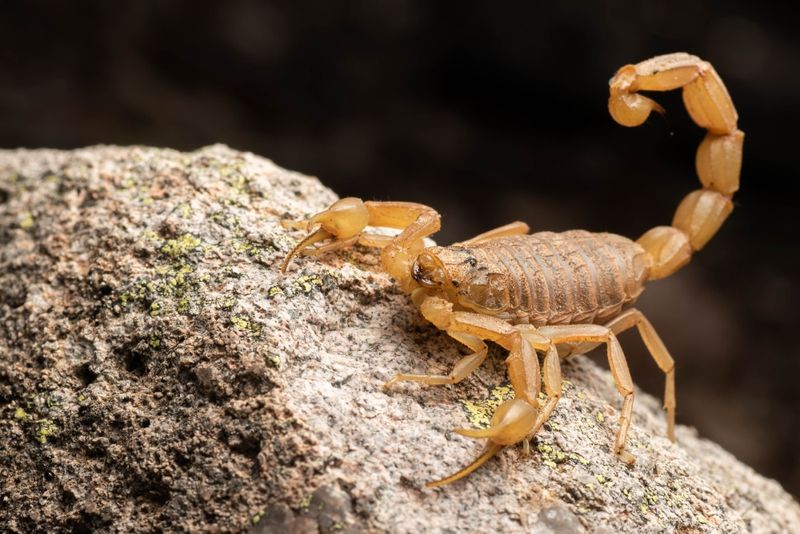
Small but mighty, the Arizona Bark Scorpion packs the most potent venom of any scorpion in North America. Barely 3 inches long, these pale yellow arachnids can squeeze through cracks as thin as a credit card, making homes throughout the Southwest their hunting grounds.
Their stings cause immediate burning pain that can radiate throughout the entire body. Victims often experience numbness, vomiting, and temporary breathing difficulties. For children and elderly people, these stings can be fatal without proper medical attention.
Most alarming is their ability to climb walls, hide in shoes, and even survive underwater for up to 48 hours. They glow bright blue-green under ultraviolet light.
4. Mountain Lion
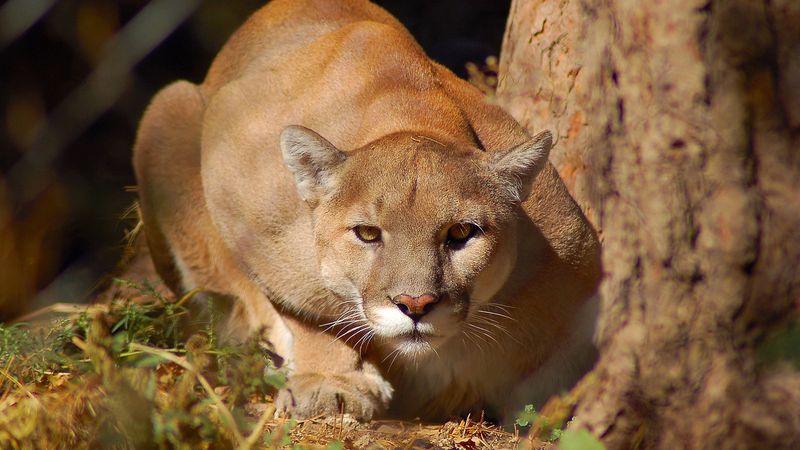
Masters of stealth, mountain lions stalk the Southwest’s rugged terrain with deadly precision. Also called cougars or pumas, these powerful cats can leap 40 feet horizontally and 15 feet vertically, easily overtaking prey or scaling obstacles.
Adult males weigh up to 200 pounds and can bring down animals several times their size. Their powerful jaws deliver a fatal bite to the neck, severing the spinal cord of deer and other prey. Mountain lions typically avoid humans but occasionally attack hikers, joggers, and children.
Unlike other big cats, they don’t roar – instead, they emit bone-chilling screams that sound disturbingly human. Their territory can span 100 square miles of wilderness.
5. Black Widow Spider
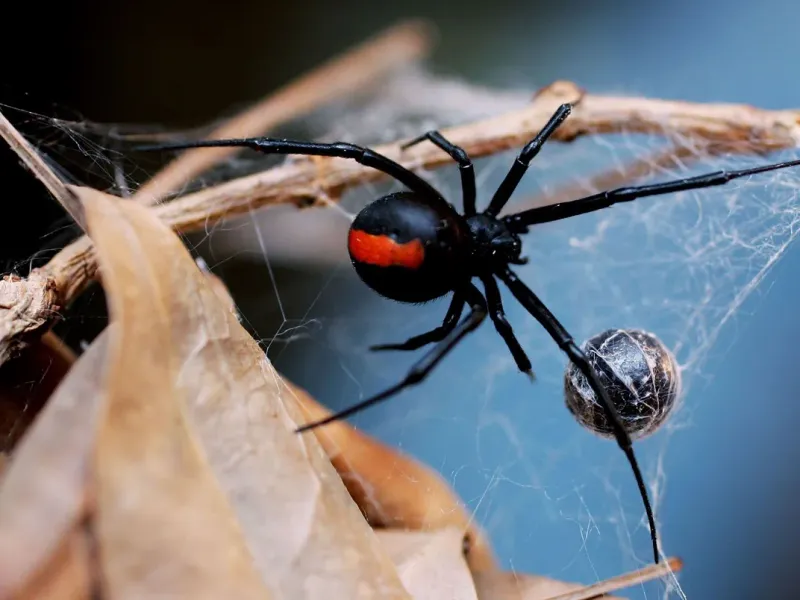
Recognizable by the red hourglass marking on her abdomen, the female Black Widow delivers venom 15 times more potent than a rattlesnake’s. These glossy black spiders build irregular webs in dark corners throughout the Southwest’s homes, barns, and wilderness.
Their neurotoxic venom attacks the nervous system, causing severe muscle cramps, nausea, and paralysis. Though rarely fatal to healthy adults, their bites can kill children and elderly people without medical intervention.
Fascinatingly, Black Widows earned their name from their notorious mating habit – females often devour males after mating. Their silk is remarkably strong, with tensile strength greater than steel of the same thickness.
6. Mojave Rattlesnake

Often called the “Mojave Green,” this rattlesnake possesses the most toxic venom of any rattler in the Americas. Unlike other rattlesnakes that primarily use hemotoxins to destroy tissue, the Mojave combines these with potent neurotoxins that attack the nervous system.
Victims experience vision problems, difficulty speaking, and respiratory paralysis. Without antivenom, death can occur within hours. Making matters worse, these snakes sometimes strike without warning – skipping the characteristic rattle that gives most victims precious seconds to retreat.
Their greenish-brown coloration provides perfect desert camouflage. They’re particularly active during spring and fall when moderate temperatures bring them out hunting during daylight hours.
7. Mexican Brown Tarantula
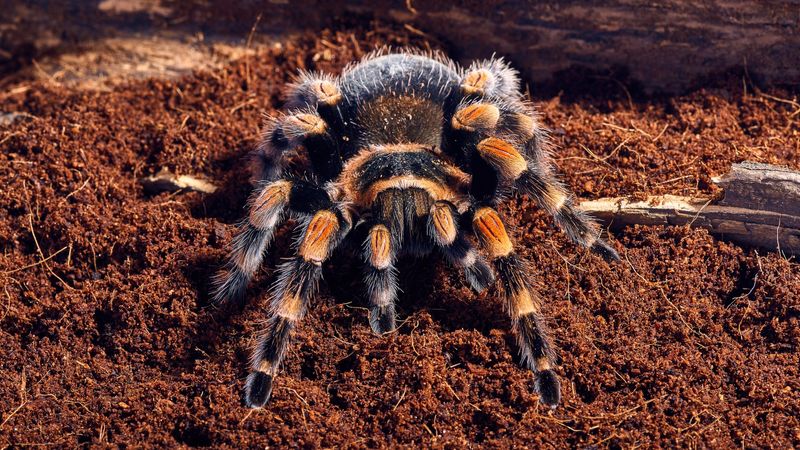
Massive and intimidating, Mexican Brown Tarantulas roam the Southwest deserts in startling numbers, especially during mating season when males venture out searching for females. Despite their fearsome appearance, their venom isn’t lethal to humans – comparable to a bee sting.
However, they possess a more sinister defense mechanism: urticating hairs. When threatened, these spiders kick thousands of microscopic barbed hairs from their abdomen that embed in predators’ skin and mucous membranes, causing intense irritation and sometimes serious allergic reactions.
Their massive fangs can deliver painful mechanical damage. Living up to 30 years, females spend most of their lives in underground burrows, emerging mainly to ambush passing prey.
8. Coral Snake
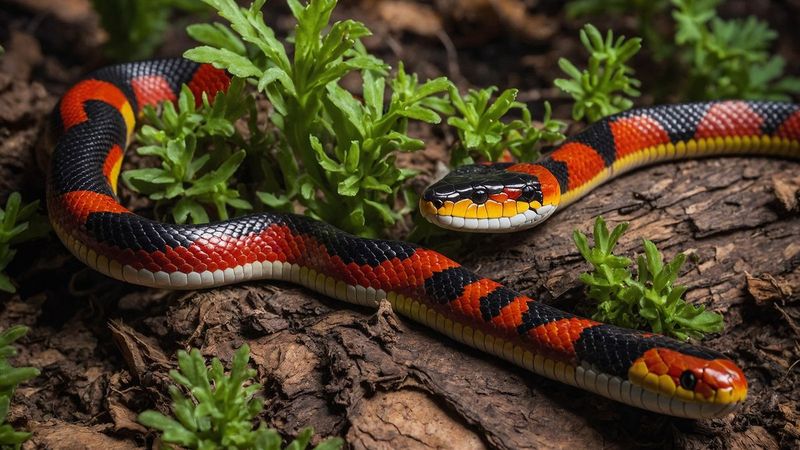
Brilliantly colored with distinctive red, yellow, and black bands, the Arizona coral snake looks almost too beautiful to be deadly. Don’t be fooled – its venom contains powerful neurotoxins that can cause respiratory failure and death.
Unlike rattlesnakes, coral snakes have small, fixed fangs requiring them to chew venom into victims rather than strike. This makes them less immediately dangerous, but many people mistakenly handle them due to their non-aggressive nature and striking appearance.
Remember the rhyme: “Red touch yellow, kill a fellow.” Coral snakes primarily hunt at night and spend most daylight hours hidden underground. Their bites often seem painless at first, causing victims to underestimate the danger until neurological symptoms begin.
9. Sonoran Desert Toad
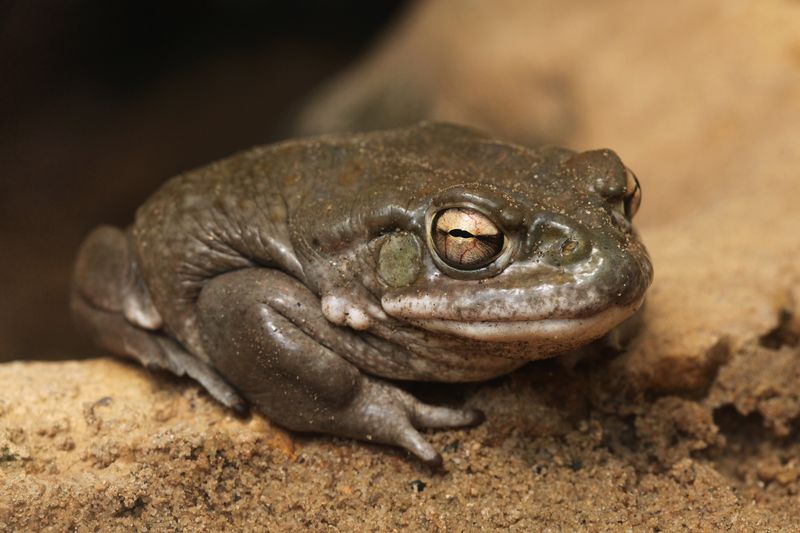
The Sonoran Desert Toad secretes one of the most potent natural psychedelics known to science, but that’s not why it’s dangerous. These massive amphibians – reaching 7 inches long – produce a milky-white venom from glands behind their eyes and on their legs.
Dogs frequently die after mouthing these toads, experiencing immediate drooling, seizures, and cardiac arrest. For humans, the toxin causes burning pain on contact with eyes or mucous membranes, and can be lethal if ingested.
During summer monsoons, these nocturnal toads emerge in huge numbers across Arizona and New Mexico. Their distinctive low-pitched release call sounds almost like a boat horn echoing across desert washes.
10. Brown Recluse Spider
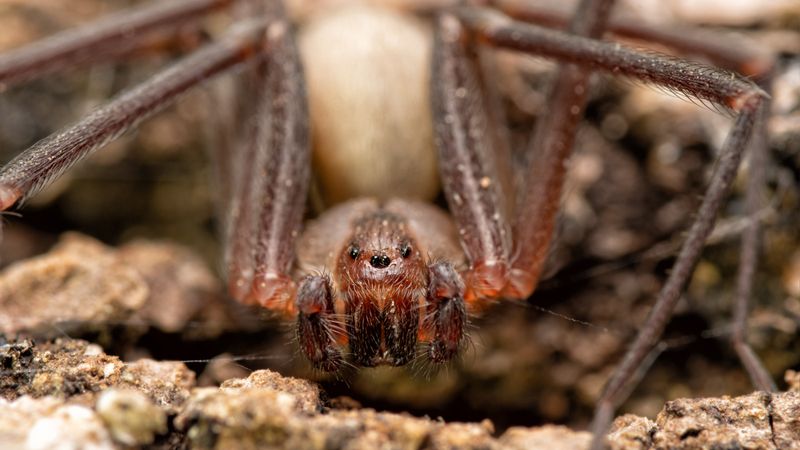
The violin-shaped marking on this spider’s back gives it the nickname “fiddleback,” but there’s nothing musical about its bite. Brown recluse spiders inject a flesh-destroying venom that creates expanding necrotic wounds that can take months to heal.
True to their name, these spiders avoid confrontation, hiding in undisturbed areas like woodpiles, storage boxes, and closets. Most bites occur when people unknowingly press against them while putting on clothes or reaching into dark spaces.
Their venom contains an enzyme that destroys cell membranes, liquefying flesh around the bite site. What starts as a small red mark can develop into a deep, crater-like wound over days. They’re particularly common in homes throughout the Southwest region.
11. Mohave Desert Sidewinder
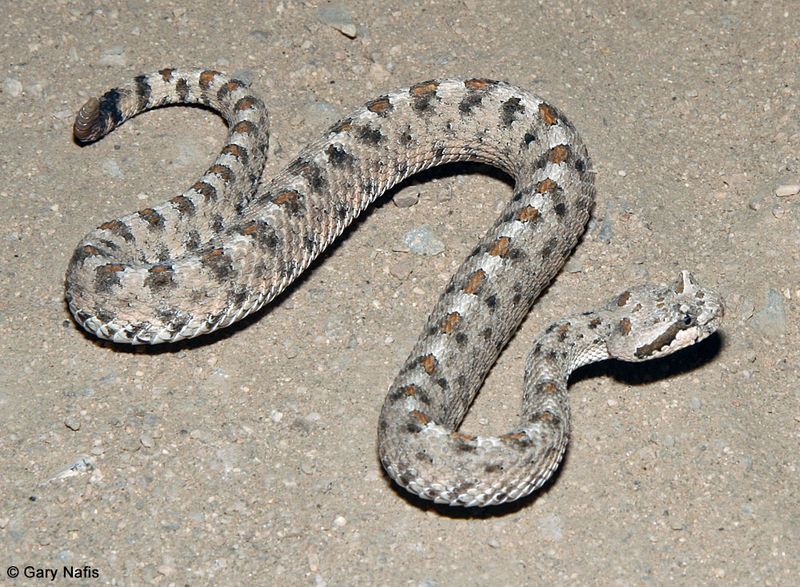
The sidewinder’s unique sideways locomotion allows it to move efficiently across loose sand, making it one of the fastest and most elusive snakes in the Southwest. These small rattlesnakes – rarely exceeding 2 feet – leave distinctive J-shaped tracks as they travel.
Their horned scales above each eye give them a demonic appearance, but serve to shield their eyes from sun and sand. Sidewinders are ambush predators, burying themselves with only eyes and nostrils exposed, waiting for small mammals to pass by.
Their hemotoxic venom destroys blood cells and tissue, causing extreme pain, swelling, and internal bleeding. Though smaller than other rattlesnakes, sidewinders compensate with incredibly fast strikes – faster than the human eye can track.
12. Kissing Bug

Don’t be fooled by the romantic name – these blood-sucking insects earn their nickname by biting humans near the mouth while they sleep. Throughout the Southwest, kissing bugs hide in cracks and crevices of rural homes, emerging at night to feed.
Their bites often go unnoticed, but the real danger comes from their feces. When the victim scratches the itchy bite, they can inadvertently rub infected feces into the wound, potentially contracting Chagas disease – a parasitic infection that can cause heart failure decades later.
Recognizable by their cone-shaped heads and distinctive orange or red stripes along their abdomens, kissing bugs have infected over 300,000 Americans with this potentially deadly parasite.
13. Mexican Beaded Lizard
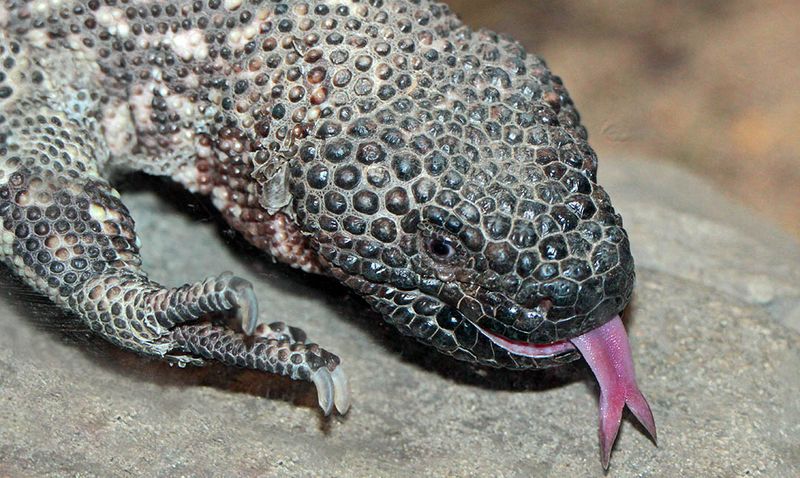
Cousin to the Gila Monster, the Mexican Beaded Lizard sports striking black and yellow beaded scales that warn predators of its venomous bite. Though less common than Gilas, these hefty lizards inhabit portions of Arizona’s southern deserts.
Their venom glands run the length of their lower jaws, delivering toxins through grooved teeth as they chew into flesh. Once latched on, they’re notorious for refusing to release their grip, sometimes hanging on for over 10 minutes while venom continues to flow.
Symptoms include excruciating pain, swelling, weakness, and dropping blood pressure. Unlike many venomous creatures, beaded lizards are surprisingly bold, sometimes approaching humans out of curiosity rather than fleeing.
14. Gray Wolf
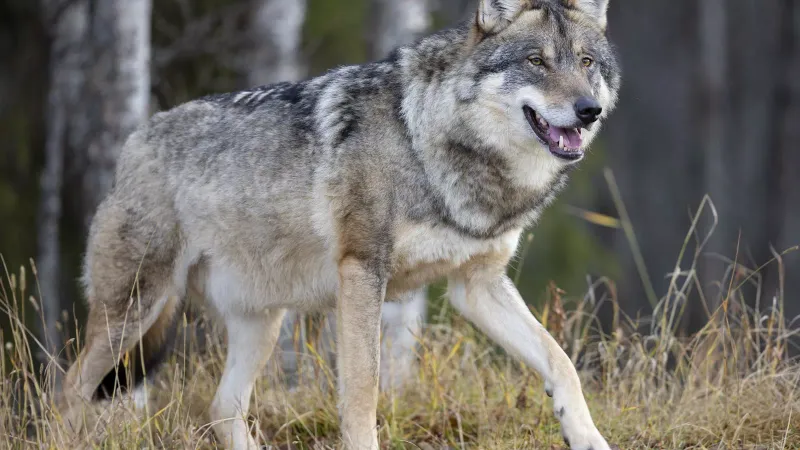
Though nearly exterminated from the Southwest by the mid-20th century, gray wolves have made a comeback in parts of Arizona and New Mexico. These apex predators hunt in coordinated packs, bringing down prey many times their individual size.
Weighing up to 145 pounds, adult wolves possess jaws that can exert 1,500 pounds of pressure per square inch – enough to crush moose bones. While wolf attacks on humans are extremely rare, they represent a potentially lethal threat, especially to unaccompanied children in remote areas.
Wolves communicate through howls that can carry for miles across desert canyons. Their reintroduction remains controversial among ranchers who lose livestock to these intelligent predators.
15. Tarantula Hawk Wasp
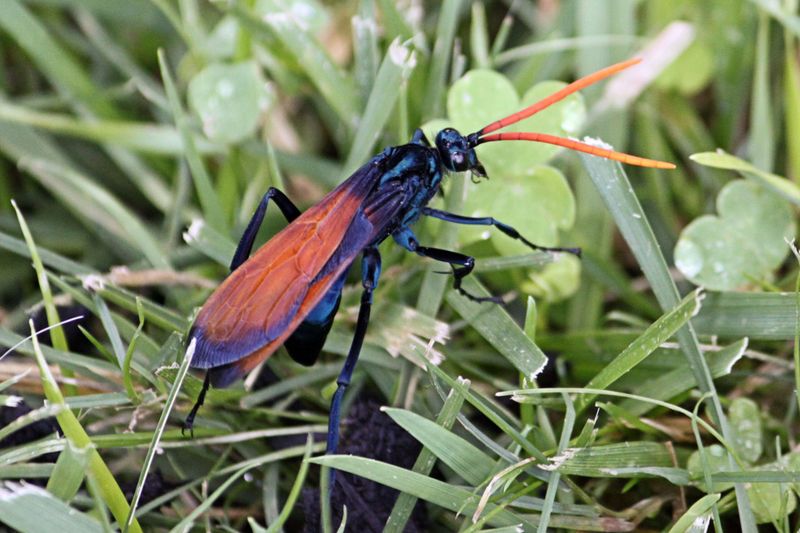
Sporting metallic blue-black bodies and orange wings, tarantula hawks deliver what entomologists rank as the second most painful insect sting in the world. These massive wasps – growing up to 2 inches long – hunt tarantulas as hosts for their young.
After paralyzing a tarantula with their sting, females drag the spider to a burrow and lay a single egg on its abdomen. When the larva hatches, it consumes the still-living spider from the inside out, avoiding vital organs until the final stages.
Human victims describe the sting as “electric” and utterly debilitating, though it typically subsides within minutes. The pain is so intense that the only recommended response is to lie down and scream until it passes.


